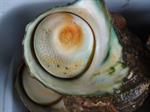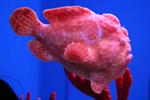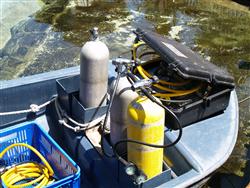
Study Marine Life
- Learn to identify different types of marine organisms
- Understand how marine life is classified
- Get a foundation for working with marine animals and environments.
Whereas Marine Studies I provides a broad understanding of marine environments as well as the animals that live in our oceans and seas; this course has a narrower and more in depth focus, teaching you about the living organisms that inhabit those places.
COURSE DURATION 100 Hours.
COURSE STRUCTURE
There are 10 lessons as follows:
- Introduction and Simple Organisms
- Terminology
- Classification or Taxonomy
- Simple and microscopic organisms
- Types of protazoans
- Ciliates
- Flagellates
- Algae
- Bacteria
- Plankton
- Sponges
- Marine Plants
- Terminology
- Overview of seaweeds
- Chlorophyta (Green Algae)
- Phaeophyta (Brown Algae)
- Rhodophyta (Red algae)
- Marine fungi
- Marine flowering plants: sea grasses, mangroves, salt marsh plants
- Cnidarians & Worms:
- Terminology
- Anemones
- Jellyfish
- Crustaceans
- Worms: flatworms, ribbon worms, round worms
- Segmented worms. peanut worms, giant tube worms
- Arthropods
- Introduction
- Characteristics
- Prawns and shrimps
- Deep water prawns in the Atlantic
- The common prawn (Palaemon serratus)
- Giant red shrimp
- Pink prawn
- Shallow water prawns
- Indian white prawn
- Tiger prawn
- Kuruma shrimp
- Green tiger prawn
- Peneaeus notialis and others
- Barnacles
- Crabs
- True crabs
- Hermit crabs
- Molluscs
- Echinoderms:
- Terminology
- Characteristics of Echinoderms
- Starfish
- Sea Urchins
- Sea Cucumbers
- Non Bony Fishes:
- Lampreys
- Hagfishes
- Sharks
- Rays
 Bony Fishes I
Bony Fishes I
- Introduction
- Terminology
- Structure and biological characteristics
- Classification
- Bony Fishes II
- Families within Oesteichyes
- Mesopelagic fish: distribution, life history and ecology
- Clupeoids (eg. sardine, herring)
- Tunas: types, life history, feeding, predators
- Mackerels
- Bill Fish (Marlins, spear fish, sail fish)
- Marine Mammals and Higher Animals
- Marine reptiles: sea snakes, sea turtles, crocadylians
- Pinnipeds (seals walruses, Seal lions
- Dugongs and Manatees
- Whales and Dolphins
- Sea birds
Each lesson culminates in an assignment which is submitted to the school, marked by the school's tutors and returned to you with any relevant suggestions, comments, and if necessary, extra reading.
AIMS
- Describe the variety and nature of microscopic animals which occur in marine environments.
- Describe the variety and nature of a range of different types of marine plants.
- Describe the variety and nature of a range of different types of cnidarians and marine worms.
- Describe the variety and nature of arthropods in marine environments.
- Describe the variety and nature of Molluscs in marine environments.
- Differentiate between different classes of Echinoderms and selected families within those classes.
- Describe the shared characteristics and distinguishing features of a selection of different species of non-bony fish.
- Describe characteristics of bony fish, including anatomy, physiology and behaviour.
- Differentiate between different families of bony fish.
- Describe the taxonomic characteristics of groups of marine animals including reptiles, birds and mammals.
Introducing a Selection of Simple Marine Animals
PROTOZOANS
These are single celled animals. Protozoans comprise a large and diverse group of microscopic organisms that live as single cells or in simple colonies. Some of them can produce elaborate shells that eventually sink and form large deposits at the bottom of the sea. They are divided into five protist phyla: Mastigophora (the flagellates), Sarcodina (the amebas), Ciliophora (the ciliates), Opalinida, and Sporozoa. Most are motile and most ingest food. The 26,000 living species are found in freshwater and at all depths in the ocean. Some are even parasites in the bodies of humans or other animals, sometimes causing diseases

JELLYFISH (mega plankton)
Bell shaped jellyfish are gelatinous animals with a simple body structure. When viewed from above, they are round and their organs radiate out from a central stomach, giving them radial symmetry. Jellyfish are planktonic and have little locomotor ability. Some may produce some movement by pulsing their bodies and jetting water from beneath their bells. Most jellyfish are carnivores. They stun their prey with stinging cells (nematocysts) located on their tentacles. The stunned prey is passed into the frilly mouth, hanging down from the centre of the bell. Jellyfish themselves are an important food source for some turtle species.
Note – marine pollution, such a plastics, can cause serious damage and even death to turtles as they mistaken this rubbish for their food source and can becomes tangled or choke to death.
CHAETOGNATH WORMS (holoplanktonic)
The only true planktonic worms are the chaetognaths, or arrow worms, because they are shaped liked arrows. Often they are called glass worms due to their transparency. They have fins and a pair of hooked, chitinous, grasping spines on each side of their heads that are used in hunting. The spines are covered with a hood when swimming. All species are hermaphroditic, carrying both eggs and sperm. A few species are known to use neurotoxins to subdue prey. These worms are carnivores and are found amidst large concentrations of plankton.
MARINE GASTROPODS
These include muscles, cockles, clams, oysters, sea slugs, cuttlefish, etc. The larvae of benthic molluscs usually found in coastal waters, such as marine gastropods including heteropods or pteropods are another type of zooplankton. There are also molluscs known as pteropods that are permanently planktonic.
ARTHROPODS
Small crustaceans can be no larger than a pin head, but may reach one centimetre in length in deep ocean.
Copepods (Phylum Arthropoda, Subphylum Crustacea, Order Copepoda)
Most macrozooplankton are copepods found in marine and freshwater ecosystems. Copepods swim using an antenna and frontal structures on their bodies. They eat phytoplankton and detritus, and occasionally other zooplankton smaller in size.
Larger crustaceans are the "malacostracan", whose bodies are soft just after they have shed their old shell. This, as a group, includes shrimps, lobsters and crabs, living on the bottom of the sea when large; but they are planktonic during the early stages of their life.
Euphausids are the most common planktonic crustaceans in many waters. They can glow in the dark. One of the better known of these species is Euphuusia superba commonly known as krill. The an important source of food for many types of whales. Krill can reach 60 mm in length and is common in the southern ocean, near Antarctica. Krill sometimes occurs in large shoals covering an area of over 10 sq. km, and several hundred metres deep.
Planktonic Eggs and Larvae
Many marine animals discharge eggs and sperm to float in seawater, mix, and eventually become fertilized (i.e. fish, tunicates, molluscs. etc). One animal may produce millions of eggs in a single spawning season. Because of the action of predators (and other environmental hazards), however, the mortality rate is usually high with only a few surviving to adulthood.
Fish eggs contain yolk, and when the eggs hatch into larvae, some yolk remains and are carried in a yolk sac under the body of the larvae. The larvae subsist on this yolk as they are drifting in the ocean until they have developed their mouths sufficiently to feed on small phytoplankton. To survive, the larvae depend upon developing to a stage at which they can catch prey of the current type and size to eat, before the yolk in the sac is used up.
Zooplankton, Behaviour & Adaptations
Many types of zooplankton migrate deeper into the water during the day and come up at night (this is often known as del migration). The migration is not regular, and reverse migration has taken place, when the plankton accumulates near the surface in daylight instead of the night. All plankton migrate differently based on factors like age, sex and the season. At certain stages in the life cycle, migration can occur, while at other stages it would appear that light is the prime factor in migration. Food is usually close to the surface. It has been suggested that these animals feed at night and sink deeper into cooler water during the day, to digest the food -but these processes are not fully understood.
Zooplankton has limited power of movement relative to currents in the water. By travelling vertically up and down, through the different layers of water at different speeds and directions, the plankton could end in different surface water than that of the previous night. Del migration "might" be a method of moving to new food supplies.
Some predators, for example pelagic anchovy and pilchard, migrate downwards simultaneously with the plankton. These fish could, themselves be following the plankton, or may be fleeing other predators such as birds or larger fish. Other fish rise from the sea bottom at night to feed on plankton; hence the zooplankton run a gauntlet every time they move. Zooplankton have a range of protective devices to help lessen their chances of being eaten. The most common of these is being invisible to predators. This is achieved by either being transparent, or merging into the background colour (camouflage).

Developing a Marine Life Career
- Studying this course is a great start; and further studies after it will certainly improve your prospects; but success is more likely if you do more than just pursue formal studies. Today's world is competitive, and you have more chance of success if you add to your studies with other initiatives.
- Keep up to date with what is happening in the industry. What are the current issues in Marine Biology?
- Brush up on your skills. Keep your skills up to date through professional development.
- Join a networking group to meet people already working in the industry
- Try to get some experience. Whether paid or unpaid, experience will always help to beef up your CV.
Why Study with ACS?
Design your own learning pathway.
Study at your own pace, from anywhere, at any time.
Receive prompt, expert support from our team of committed and friendly tutors.
Your learning is our priority. We are flexible and adaptable to meet your educational needs!
Want advice on creating a learning pathway that suits your needs? Speak to one of our friendly staff for today!
Phone - International: +61 7 5562 1088 In Australia: 07 5562 1088
Email - admin@acs.edu.au or studentservices@acs.edu.au